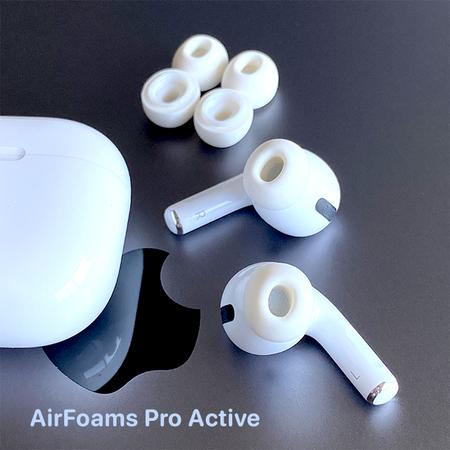
When I went to film school, it was drilled into your head that the most important component of any film/video project is the audio. I also played in bands for years plus did some composing and recording in local studios. I recorded both songs and soundtracks for industrial videos. Ergo, sound quality is important to me.
I’ve assembled home-fashioned 5.1 sound systems in the past. But now I live in a studio apartment, so that puts the kibosh on that. I have a great set of Audio Engine 2+ speakers that are great.
As far as computational audio, I’ve long been fascinated with binaural audio, which you can find examples of on YouTube. When Apple released AirPod Pros and introduced Spatial Audio I had to check it out.
It’s a good first step. But the weakest link in the chain to me is the tips on the AirPod Pros. They don’t provide a good enough seal to make Spatial Audio fly. Others have resorted to memory foam. Good concept except I’ve read of complaints that cleaning the ear wax off of them is a task (some have said that their black tips have turned a putrid green over time).
Today’s product review is of the marriage of both silicon and memory foam. They’re called AirFoams Pro Active from Charjen.
Construction begins with the inner housing (that has pressure release slots) which snap securely onto the AirPod Pros. The housing is covered with a sheath of silicon, which is enveloped with a layer of memory foam that conforms to the shape of your inner ear.
Finally, the whole tip is encased in an outer layer of silicon. The outer layer of silicon not only makes them easy to clean but provides moisture resistance, a firm grip, and a solid seal for your inner ear.
These are so logical that they’re worthy of a ‘palm slap’. The AirFoam Pros block outside noise so effectively as to highlight the dynamic range of the AirPod Pros.
The result is well-rounded sound reproduction. Granted AirPod Pros don’t have as much bass as I’d like but I was a bass player. Most users will be more than satisfied with the sound quality.
They make your experience immersive. I tried TV shows (Red Dwarf, Ted Lasso), Spatial Audio and Dolby productions (Greyhound, The Big Lebowski), and music (Billy Joel, The Beatles’ White Album remix). Not once was I disappointed.
As for use, they snapped into place easier than Apple’s tips. As far as support and proper use, instructions are fastened to the box. If that’s not enough, there are several instructional videos on their site.
I’m more than happy with my purchase. I can’t tell you how many times Apple’s AirPod Pros would fall from my ear with a bit of movement like going down the sidewalk. I received an ideal fit rating from my iPhone tips only three times! I resigned myself that they were going to have to be regularly pressed back into my ear canals.
These, on the other hand, have been a pleasure. I can sit at the coffeehouse and hear absolutely no outside noise while listening to a podcast, some music, or watching YouTube. And at home, it’s a treat combined with my AppleTV, whether the program or film has Spatial Audio, Dolby sound, stereo, or simply mono.
If you don’t need or want the anti-moisture/sweat-resistant feature of the exterior silicon, Charjen also makes a different version called AirFoam Pro Foam Ear Tips that don’t have an outer silicone layer, merely foam rubber, and those come in six different colors.
Either way, I feel these increased the value of my AirPod Pros multifold. Pricey? Yep. A worthy investment? Undeniably.


I think he’s confusing silicon and silicone. Silicon is the element from which we make integrated circuits or transistors. Silicone is the flexible often transparent polymer which is largely chemically inert and flexible.